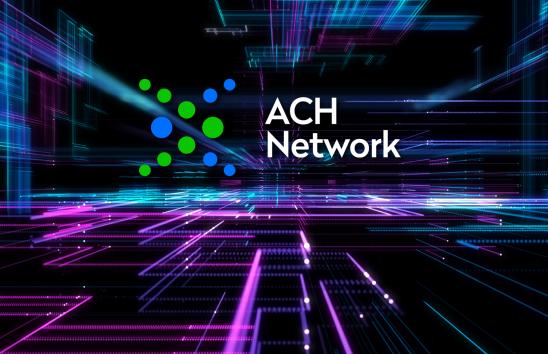ACH Operations Bulletin #2-2014: ACH Transactions Involving Third-Party Senders and Other Payments Intermediaries
Executive Summary
In most ACH transactions, the roles of the various parties to the transaction (e.g., Originator or Receiver) are well understood. When a transaction involves a Third-Party Sender or other payment intermediary, however, roles can become confused. Although the proliferation of new payment models makes it impossible to catalogue all the different fact patterns that may arise, this ACH Operations Bulletin is intended to provide some representative examples that should help participants and observers properly categorize the roles of the parties in payment scenarios involving different types of third party payment intermediaries, and understand how ACH transactions should be identified for consumers. Note: This ACH Operations Bulletin is for information purposes only, and is intended to provide general guidance regarding certain principles regarding the interpretation of the Nacha Operating Rules. All applications of the Nacha Operating Rules are subject to the facts and circumstances of the specific case. This ACH Operations Bulletin is not intended to provide legal advice. Readers should obtain their own legal advice regarding their obligations under the Nacha Operating Rules or applicable legal requirements.
Discussion
A Nacha rule change became effective on March 21, 2014 that revised the definition of a Third-Party Sender. Note: See Section 8.104 “Third-Party Sender,” 2015 Nacha Operating Rules & Guidelines, page OR69. The new definition focuses on two fundamental characteristics of the relationship among Third-Party Senders and Originators/ODFIs: 1) the Third-Party Sender acts as an intermediary between the Originator and the ODFI; and (2) the Third-Party Sender (rather than the Originator) has the Origination Agreement with the ODFI. Further, the new definition acknowledges that an ACH participant can be a Third-Party Sender for one set of Entries and an Originator for another set of Entries, including when multiple Entries are used in different stages of an overall transfer (as described in the scenarios below).
In order to analyze an ACH Entry or series of Entries that involve the participation of a payment intermediary, the first step is to identify the underlying transaction that is taking place and the persons or entities that have the underlying direct obligations to each other as part of that transaction. For example, when an employer makes payroll payments to employees, the underlying transaction is a payment of wages or salary from the employer to the employee. A simple, direct payment from the employer to the employee might involve the employer (Originator) instructing its bank (ODFI) to initiate an ACH credit from the employer’s account at the ODFI to the employee’s (Receiver) account at the employee’s bank (RDFI).
If the employer engages a payroll processor to act as a third-party payment intermediary on its behalf, that does not change the nature of the underlying transaction – the employer’s payment of wages or salary to the employee – but it may result in the underlying transaction being split into two related ACH Entries: 1) an ACH debit initiated by the payroll processor to obtain payroll funds from the employer: and 2) an ACH credit initiated by the payroll processor to complete the payment to the employee on behalf of the employer. The second step of the analysis therefore is to understand on whose behalf the third-party intermediary is acting. Where the payment intermediary is visible only to one party, as in this example, it is clear that the intermediary acts on behalf of that party, e.g., the payroll processor acts on behalf of the employer. In other circumstances it may be necessary to inquire more deeply into the relationships of the intermediary, including its activities in obtaining authorizations from different parties, to confirm its role.
Once these roles are identified, the ACH Entries that comprise the different legs of the overall transaction must be analyzed separately to determine the capacity in which the intermediary is acting. In the payroll example above, the payroll processor is acting in its own name when it debits the employer’s deposit account to obtain funding for the wage and salary payments that it has contracted to process. The underlying obligation for this leg of the transaction is between the employer and payroll provider; therefore, the payroll provider is acting as an Originator of the ACH debit to the employer’s (Receiver) funding account.
By contrast, in the second leg of the transaction, the ACH credit to the employee’s account, the payroll processor is acting for the employer to satisfy the employer’s underlying obligation to pay the employee. Therefore, the employer, which has instructed the payroll processor, is the Originator of the ACH credit to the same extent as if the employer had initiated the ACH credit directly itself, while the employee remains the Receiver. The payroll processor, however, acts in a different role for this ACH Entry. When a third-party moves funds on behalf of another through the ACH Network, that entity, at a minimum, acts as a Third-Party Service Provider (TPSP). To decide whether or not that entity also acts as a Third-Party Sender (a particular type of TPSP), it must be determined whether or not the Originator or the intermediary has an ACH Origination Agreement directly with the ODFI for the origination of Entries.
- If the Originator has the ACH Origination Agreement with the ODFI, there is no Third-Party Sender involved in the transaction, and the intermediary is only a Third-Party Service Provider.
- If the intermediary has the ACH Origination Agreement with the ODFI, the intermediary acts as a Third-Party Sender.
It is important to remember that regardless of whether the payment intermediary is the Originator or a Third-Party Sender with respect to its role in any specific Entry, the ODFI should perform appropriate diligence and monitoring of the intermediary’s ACH activity, as provided in Subsection 2.2.3 of the Nacha Operating Rules. Note: See Subsection 2.2.3 ODFI Risk Management, 2015 Nacha Operating Rules & Guidelines, page OR6. ODFIs that support payment models involving payment intermediaries must fully understand the nature of the risks that are created by their payment intermediaries and should take action commensurate with the risks to mitigate resulting exposures, including the risk of failure of the intermediary.
Full PDF version of this Bulletin



